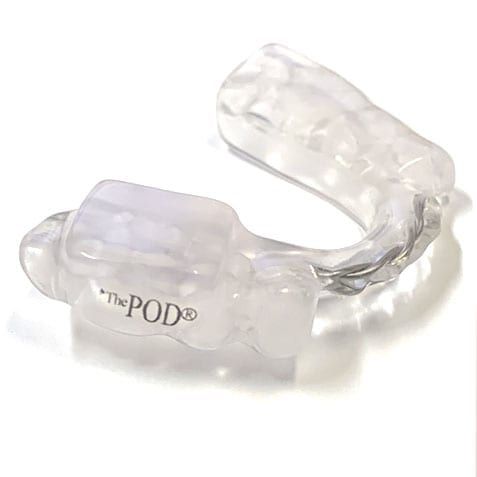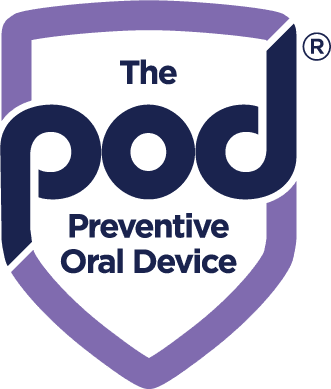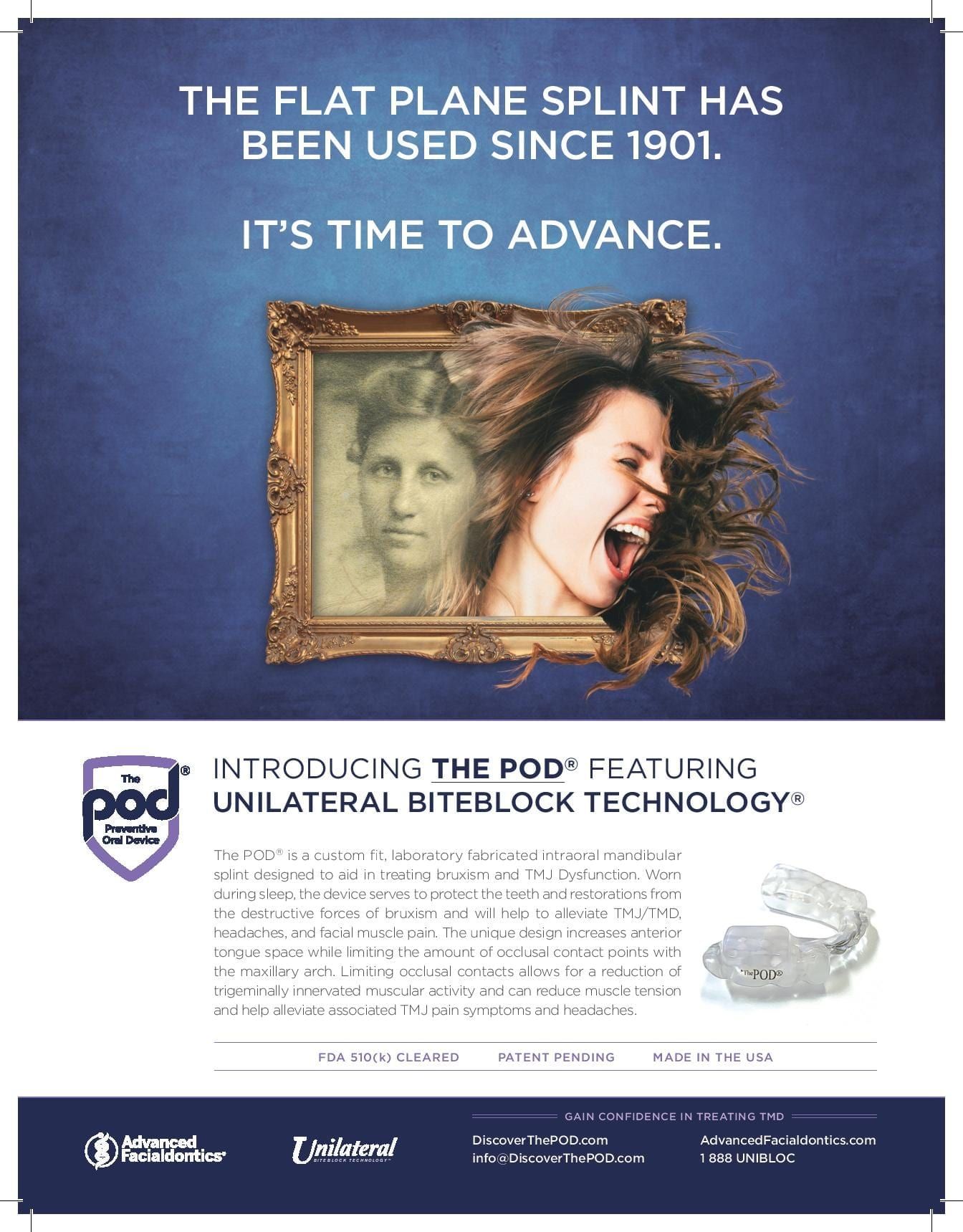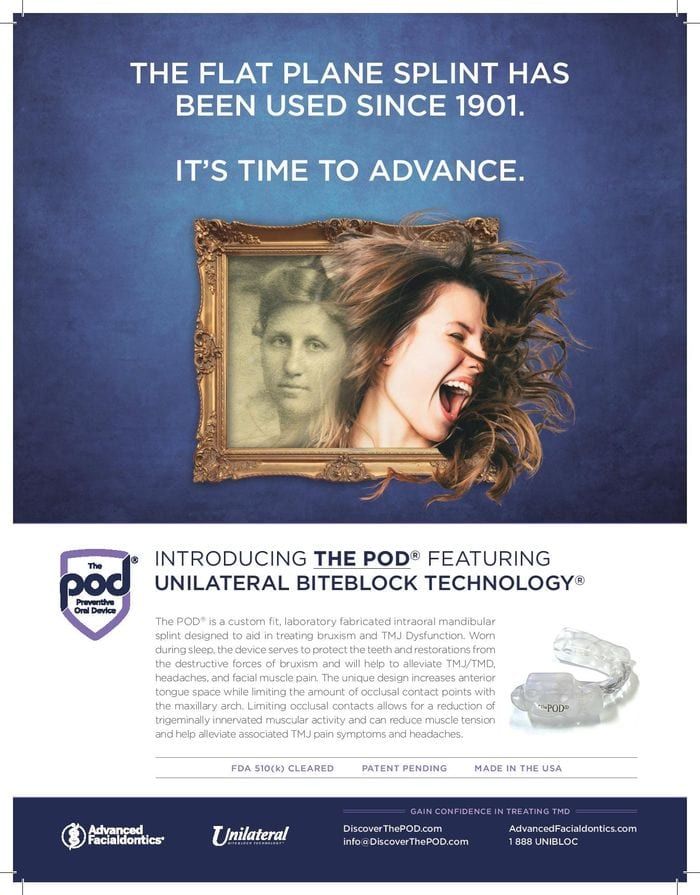The flat plane occlusal guard has been used to protect teeth for clenching and tooth grinding for the past 111 years. In 1908, Moritz Karolyi, a Viennese dentist, described bruxism as “traumatic neuralgia” and stated “it was the cause of a periodontal condition called pyorrhea (periodontitis).” He most likely fabricated the first occlusal guard and we have been using the design of ever since.
Isn’t it time for a new design?
In July of 2019 the FDA has cleared, Advanced Facialdontics’ appliance, the POD™ , Preventative Oral Devise, a device using the Unilateral BiteBlock Technology® for Bruxism and TMJ.
The POD™ is a custom fit, laboratory fabricated intraoral mandibular splint designed to aid in treating clenching grinding (Bruxism) and TMJ. The device serves to protect the teeth, crowns, veneers, and restorations from the destructive forces of Bruxism and will help alleviate headaches, TMJ and muscle pain.

By having the dental arches out of contact, there is a reduction of trigeminal innervated muscular activity. This allows for reduced muscle tension and can help alleviate associated jaw pain and headache symptoms. The Unilateral BiteBlock Technology® allows for more room for the tongue, which is free to come forward for better breathing during sleep as opposed to the flat plane occlusal night guard which inhibits the tongue from coming forward.
Our body is equipped with a proprioceptive mechanism which will adjust to the biting forces based on the area of tooth contact. The Unilateral BiteBlock Technology® provides a reduced area of contact and can reduce the forces which could be harmful to our TMJ. The cranial suture system provides the shock absorbers to absorb the force of the biting and tooth grinding.
The POD® is an ideal appliance for assisting with myofunctional therapy to create better tongue posture to create better breathing. When we place the tongue at the roof of the mouth for swallowing the tongue moves further out of the airway with the appliance in place. Your body can create better habit patterns over time.




